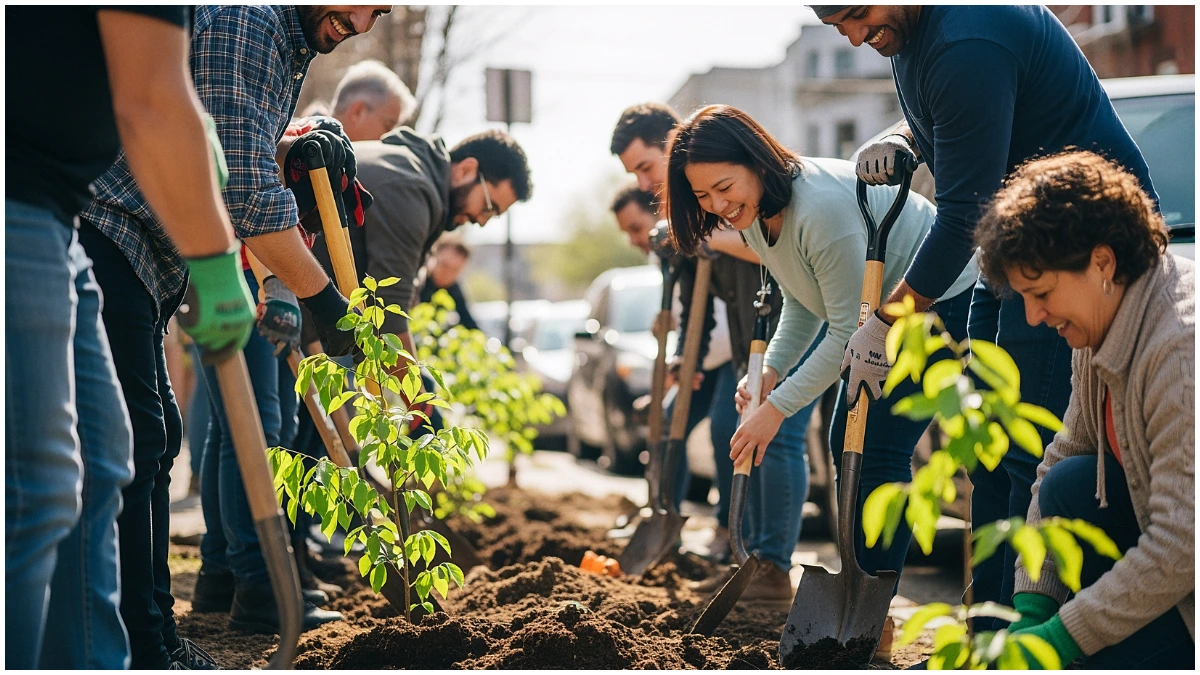Climate change is not just a distant threat for future generations—it is actively reshaping our world today. From unprecedented heatwaves to devastating floods, rising sea levels to agricultural disruption, the impacts of a changing climate are being felt in every corner of our planet. While the scale of this challenge might seem overwhelming, the solution doesn’t solely rest with governments or corporations. The most effective climate action happens when communities come together, harnessing the power of collective effort to create meaningful change.
Hello! I’m Katrina, and I’ve spent years witnessing firsthand how communities can become the driving force behind climate solutions. Whether it’s neighbors organizing solar energy cooperatives, local groups restoring native ecosystems, or residents advocating for sustainable transportation options, I’ve seen how ordinary people can achieve extraordinary results when they unite around environmental goals. The evidence is clear: when communities take ownership of climate action, they create more than just environmental benefits—they build resilience, strengthen social bonds, and foster innovation that ripples outward to inspire broader change. Let’s explore together why your involvement in community climate action isn’t just helpful—it’s absolutely essential.
The Power of Collective Impact
Local action drives global change: Communities serve as the essential bridge between individual actions and systemic transformation. Local governments and community-based organizations are uniquely positioned to implement tangible climate action within their communities, acting as effective conduits for bringing outside resources to address local needs while significantly influencing legislative and budget priorities at higher levels.
Amplification through unity: When community members work together, their individual efforts multiply exponentially. A community solar project, for instance, can reduce emissions far more effectively than individual rooftop installations. Community energy structures demonstrate remarkable impacts, with 89% of participants reporting reduced energy costs and 67% increasing their self-consumption. This collective approach creates economies of scale that make climate solutions more accessible and affordable for everyone involved.
Building social resilience: Community-based climate action creates what researchers call “social capital“—the networks of relationships that enable communities to function effectively. When neighbors collaborate on environmental projects, they build trust and social cohesion that extends far beyond climate issues. This strengthened social fabric becomes crucial during climate-related emergencies, as communities with strong social networks recover more quickly from disasters and adapt more effectively to changing conditions.
Leveraging local knowledge: Communities possess irreplaceable local knowledge about their environment, climate patterns, and social dynamics. Local residents understand which areas flood during heavy rains, where wind patterns affect energy generation, and how cultural practices can support or hinder environmental initiatives.
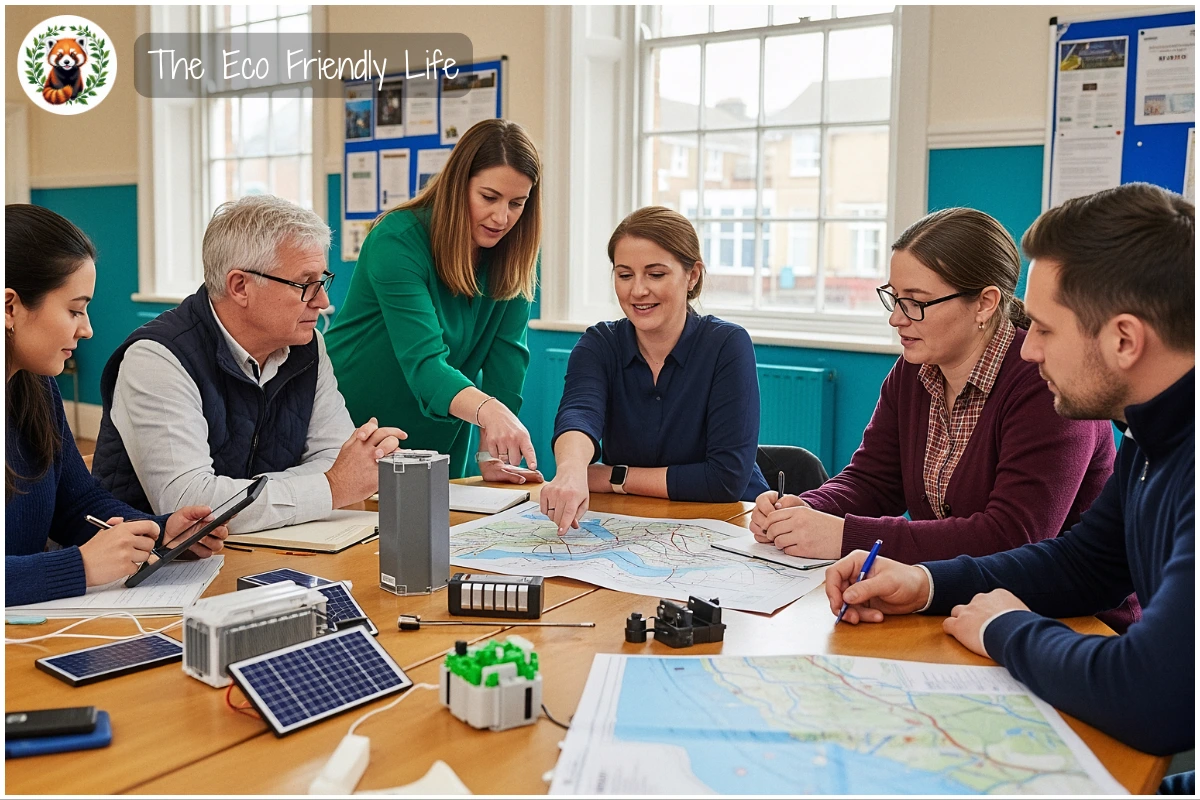
Understanding the power of collective impact sets the stage for examining how communities worldwide are translating this potential into real-world success stories that deliver tangible benefits for people and the planet.
Success Stories from Around the Globe
Community solar pioneers: Across the United States, community solar projects are demonstrating how collective action can democratize clean energy access. These initiatives allow multiple households to benefit from a single solar installation, making renewable energy accessible to renters, low-income families, and those with unsuitable roofs. Community solar projects have grown rapidly in the last decade, with many communities using them to meet their climate action plans and renewable energy goals while reducing energy bills for participants.
Urban green transformations: Cities worldwide are witnessing remarkable transformations through community-driven environmental initiatives. In San Francisco, community-based organizations are leading climate justice efforts that address environmental challenges while tackling social inequities. These organizations ensure that climate action benefits all residents, particularly those in historically marginalized communities who often bear the brunt of environmental harm.
Rural adaptation innovations: Rural communities are developing innovative adaptation strategies that combine traditional knowledge with modern climate science. In Ethiopia, community-based watershed development programs have significantly reduced farmers’ vulnerability to climate change and variability. These initiatives have improved ecosystem health, increased agricultural productivity, and strengthened community resilience through collective land management practices.
Coastal protection initiatives: Coastal communities facing sea-level rise are pioneering nature-based solutions through collaborative efforts. Community-based organizations are restoring wetlands, implementing living shorelines, and developing early warning systems that protect both human settlements and marine ecosystems. These projects demonstrate how local action can address both immediate protection needs and long-term climate adaptation.
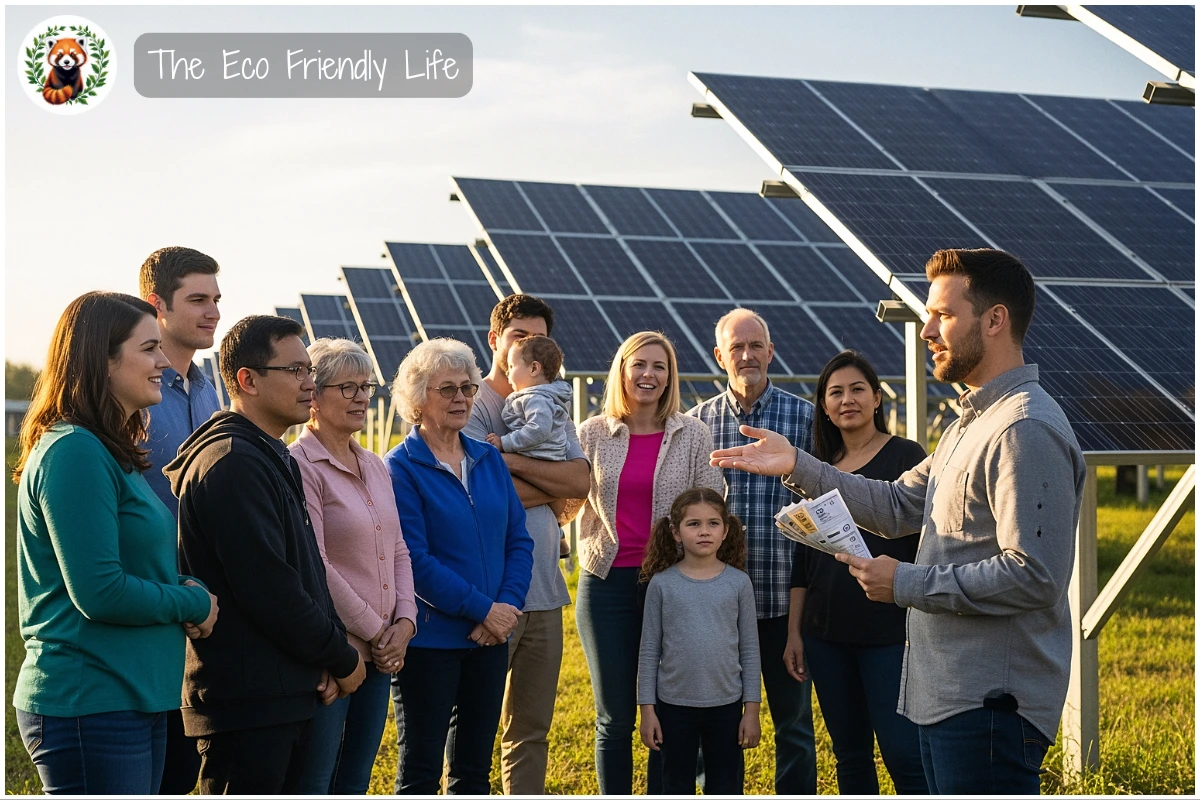
These inspiring examples from around the world demonstrate the tangible benefits that emerge when communities unite around climate action, setting the foundation for understanding why community approaches consistently outperform individual efforts in addressing our climate challenges.
Why Communities Outperform Individual Action
Scale and efficiency advantages: Community-based climate initiatives achieve far greater efficiency than individual efforts. When households share resources for renewable energy projects, the per-unit costs decrease significantly. Community sharing of solar energy can reduce joint electricity costs by 12.7% on average compared to individual installations, while fair distribution of these savings ensures that all participants benefit proportionally from their contributions.
Knowledge sharing and innovation: Communities create natural environments for learning and innovation. When one household successfully implements an energy-efficient heating system, neighbors can learn from their experience, avoiding costly mistakes and accelerating adoption. This peer-to-peer learning is particularly powerful because it comes from trusted sources who share similar circumstances and constraints.
Political influence and advocacy: Individual voices, no matter how passionate, struggle to compete with well-funded corporate interests. However, organized communities can wield significant political influence. Local community action has been shown to foster political engagement and increase pro-environmental behaviors at individual, collective, and system levels, creating sustained pressure for policy changes that support climate action.
Economic leverage: Communities can access funding and resources that individuals cannot. Group purchasing power reduces costs for everything from solar installations to electric vehicles. Community organizations can also apply for grants and subsidies specifically designed for collective action, multiplying the financial resources available for climate initiatives. Additionally, community-owned projects keep economic benefits local rather than flowing to distant corporations.
The clear advantages of community-based approaches naturally lead to practical questions about how individuals can begin their own journey toward meaningful community climate involvement through daily actions and conscious consumer choices.
Retailers That Support the Planet – Our Product Recommendations
Supporting businesses that align with climate action values amplifies your individual impact while funding solutions that benefit entire communities. These retailers demonstrate how commerce can drive positive environmental change while providing practical pathways for community engagement through established affiliate partnerships.
Our Retailer Recommendation for Adults
Patagonia – Community Environmental Leadership
Patagonia stands as one of the most influential voices in corporate environmental responsibility, dedicating at least 1% of sales to environmental causes and supporting grassroots activism worldwide. Their approach extends far beyond sustainable product manufacturing to actively funding community-based climate initiatives, from local river restoration projects to indigenous-led conservation efforts. Through their Action Works platform, they connect customers with local environmental groups, creating pathways for community engagement while their worn wear program demonstrates circular economy principles at scale.
Our Retailer Recommendation for Kids/Families
Grove Collaborative – Sustainable Home Transformation
Grove Collaborative transforms household sustainability by providing families with carefully vetted eco-friendly products delivered through a convenient subscription model. Their community impact extends through their plastic-free packaging initiatives and partnerships with environmental organizations that support local conservation projects. The platform makes it simple for families to reduce their environmental footprint while supporting brands that prioritize community wellbeing and environmental justice, creating ripple effects that extend from individual households to broader community sustainability initiatives.
These business partnerships demonstrate how supporting aligned retailers creates a multiplier effect that extends your climate impact into community-level projects and initiatives, creating the foundation for taking meaningful action in your own daily life and routines.
Taking Action in Your Daily Life
Energy transformation at home: Your household energy choices directly impact community-wide emissions and can inspire neighborhood-level change. Transitioning to renewable energy sources not only reduces your personal carbon footprint but demonstrates feasibility to neighbors and supports the growth of local clean energy infrastructure. Even small changes like LED lighting upgrades and smart thermostats create cumulative impacts when adopted across communities.
Transportation revolution: Community-focused transportation choices create the most significant climate benefits. Walking, cycling, using public transit, and participating in carpooling networks reduce emissions while strengthening social connections within your community. Supporting and advocating for improved public transportation, bike lanes, and pedestrian infrastructure creates lasting community benefits that extend far beyond your personal travel needs.
Food system engagement: Local food systems offer powerful opportunities for community climate action. Participating in community-supported agriculture, farmers markets, and community gardens reduces food miles while building resilient local food networks. Growing your own food or supporting urban agriculture initiatives creates green spaces that provide community cooling, improve air quality, and strengthen food security for all residents.
Consumption consciousness: Thoughtful consumption patterns, when adopted collectively, drive market transformation toward sustainability. Choosing durable, repairable products and participating in community sharing networks reduces resource consumption while building community connections. Supporting businesses with strong environmental commitments and avoiding overconsumption sends market signals that encourage broader corporate responsibility.
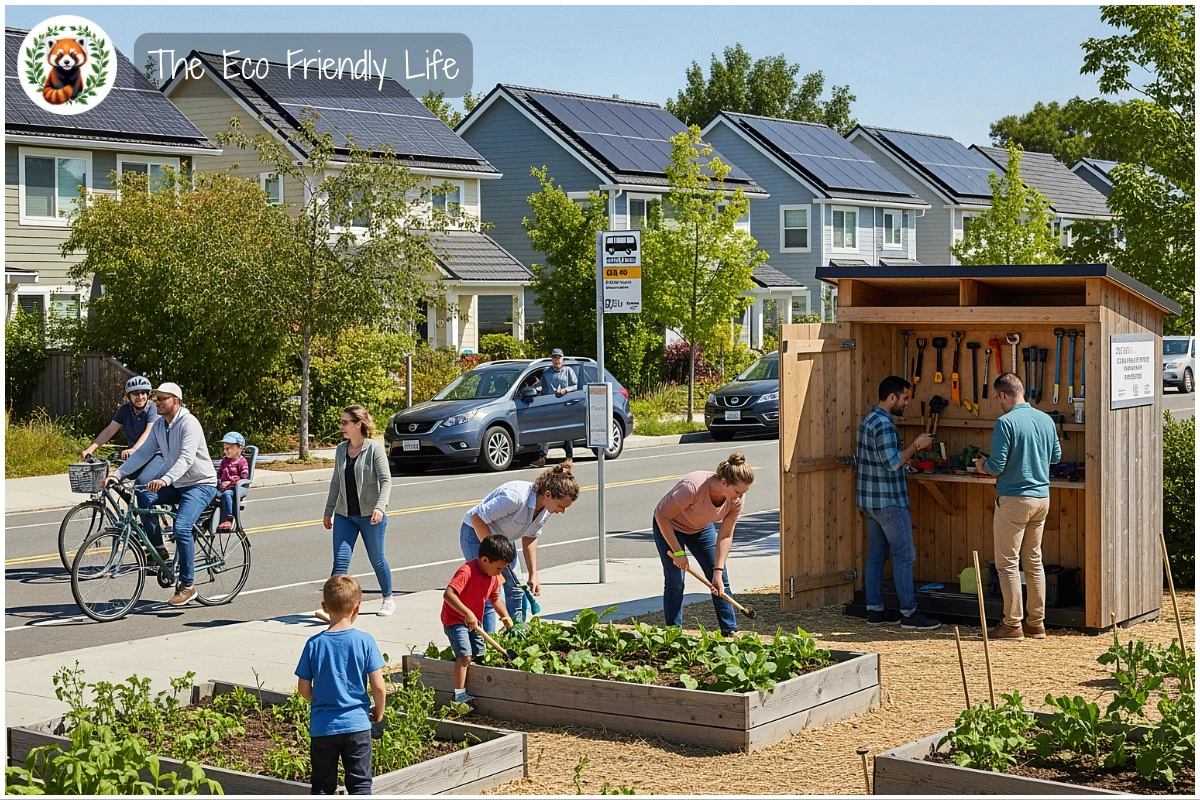
Understanding these daily action opportunities creates the foundation for exploring specific practical tips that can immediately reduce your environmental impact while strengthening community connections and demonstrating concrete ways to make a difference.
Practical Daily Tips You Can Action Today
| Tip | Implementation | Community Impact |
|---|---|---|
| Join or start a community garden | Contact local community centers or organize neighbors to establish shared growing spaces. | Creates green spaces, improves air quality, and builds neighborhood food security while reducing transportation emissions. |
| Participate in neighborhood energy cooperatives | Research existing renewable energy cooperatives or work with neighbors to establish group purchasing programs. | Reduces energy costs for all participants while accelerating clean energy adoption and creating local energy resilience. |
| Organize community composting initiatives | Set up neighborhood composting bins or coordinate with municipal programs for organic waste collection. | Reduces methane emissions from landfills while creating soil amendments for community gardens and reducing waste management costs. |
| Create neighborhood tool and resource sharing networks | Establish lending libraries for tools, equipment, and seasonal items through community apps or bulletin boards. | Reduces individual consumption and costs while building social connections and decreasing manufacturing demands. |
| Advocate for improved public transportation | Attend local government meetings, join transportation committees, and coordinate with neighbors to request better service. | Creates lasting infrastructure improvements that reduce community-wide emissions while improving mobility for all residents. |
| Establish community recycling and upcycling programs | Organize neighborhood swap meets, repair cafes, and specialized recycling drives for items like electronics. | Diverts waste from landfills while building community skills and reducing the need for new product manufacturing. |
| Support local farmers markets and food producers | Shop regularly at farmers markets and encourage neighbors to participate in community-supported agriculture programs. | Reduces food transportation emissions while supporting local economy and creating resilient community food systems. |
| Organize neighborhood clean energy information sessions | Host educational gatherings about solar installation, energy efficiency, and available incentives with local experts. | Accelerates clean energy adoption through peer learning while reducing costs through group purchasing and shared knowledge. |
| Create community emergency preparedness networks | Develop neighborhood resilience plans that include climate adaptation strategies and resource sharing protocols. | Builds community resilience to climate impacts while strengthening social connections and improving emergency response capabilities. |
| Establish car-free or car-light community zones | Work with neighbors and local government to create pedestrian-friendly spaces and promote alternative transportation. | Reduces emissions and air pollution while creating safer, more livable community spaces that encourage social interaction. |
Building these daily practices creates momentum for deeper community engagement and opens pathways to address common questions and concerns that many people have when beginning their community climate action journey.
FAQs
How can I find existing climate action groups in my community?
Start by contacting your local government’s environmental or sustainability department, visiting community centers, and searching online platforms like Meetup or Facebook for environmental groups in your area.
What if my community seems resistant to environmental initiatives?
Begin with projects that offer clear economic benefits or address immediate community concerns like air quality or energy costs, then gradually introduce broader climate action concepts as trust and interest develop.
Can small community actions really make a difference in addressing global climate change?
Yes—community actions create multiplier effects through social influence, policy advocacy, economic impacts, and demonstration of feasible solutions that can be scaled up and replicated globally.
How do I convince neighbors to join community climate initiatives?
Focus on shared benefits like cost savings, improved health, community resilience, and local economic development rather than abstract environmental concepts, and start with small, achievable projects that build trust and demonstrate success.
Organizations to Support – Our Recommendations
These organizations provide established frameworks for channeling community energy into effective climate action while building the skills and networks necessary for sustained local impact.
350.org – This global climate movement builds community power through grassroots organizing and mass mobilization. Their approach emphasizes local action as the foundation for systemic change, supporting communities worldwide in developing climate resilience while advocating for policy transformation. You can support their work through 350.org to fund community-based climate action initiatives.
Climate Reality Project – Founded by Al Gore, this organization trains local climate leaders and supports community-based climate action through education and advocacy. Their programs empower individuals to become effective climate communicators within their communities while building networks of local action. Support their community leadership programs at The Climate Reality Project.
Citizens’ Climate Lobby – This nonprofit creates pathways for community members to engage in climate policy advocacy through local chapters and grassroots education. Their approach builds bipartisan support for climate solutions by training volunteers to effectively communicate with elected officials and engage their communities. Join their mission at Citizens’ Climate Lobby.
These organizations offer multiple ways to get involved and make meaningful contributions to community-based climate action initiatives.
Resources and Further Reading
These resources provide both theoretical foundations and practical tools for communities beginning their climate action journey or seeking to enhance existing initiatives.
IPCC Working Group II Reports – The Intergovernmental Panel on Climate Change provides comprehensive guidance on community-based adaptation strategies and implementation frameworks. Their reports offer evidence-based approaches for local climate action through the IPCC website.
EPA Green Communities Program – The Environmental Protection Agency offers practical resources for community climate action planning, including assessment tools, implementation guides, and case studies from successful community initiatives. Access comprehensive planning resources at the EPA’s G3 program.
ICLEI Local Governments for Sustainability – This global network provides community-focused climate action resources, tools, and best practices for local climate initiatives. Their platform connects communities worldwide and offers practical implementation guidance through ICLEI.
These platforms offer comprehensive support for communities at every stage of their climate action development and implementation process.
Our Related Articles
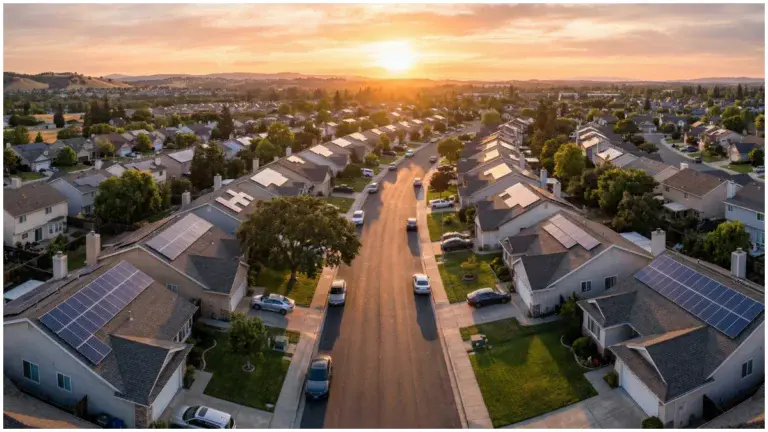
The Basics Of Solar Panels And Photovoltaic Technology
Solar energy represents one of the most accessible and sustainable power sources available to homes and businesses worldwide. As electricity costs continue to rise and…
Read More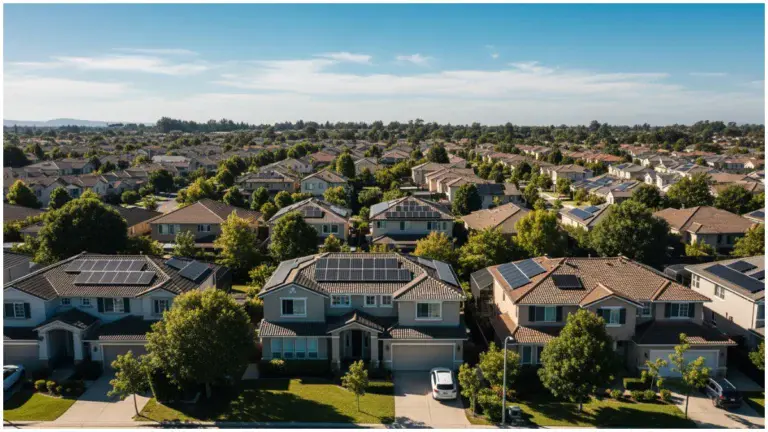
Solar Power: How It Works And Its Benefits
The sun rises every morning, casting its golden rays across our planet and providing an abundant source of free energy that could power our homes,…
Read MoreConclusion
Community involvement transforms climate action from an overwhelming global challenge into achievable local solutions that create lasting impact. When neighbors collaborate on renewable energy projects, advocate for sustainable transportation, or establish community gardens, they generate benefits that extend far beyond environmental protection—building social resilience, economic opportunities, and pathways to systemic change.
The evidence is clear: communities that engage collectively in climate action achieve greater emission reductions, create more equitable outcomes, and build stronger resilience to climate impacts than those relying solely on individual efforts. From community solar cooperatives reducing energy costs to neighborhood adaptation projects protecting against extreme weather, local action creates the foundation for global transformation.
Your community needs your voice, your ideas, and your commitment to create the climate solutions that will protect both current and future generations. Whether you join existing initiatives or help create new ones, your involvement multiplies the impact of every action while building the social connections that make communities stronger and more resilient.
What climate action opportunity in your community excites you most, and what first step will you take this week to begin or deepen your involvement? Share your thoughts and experiences in the comments below—your story might inspire others to take action in their own neighborhoods.


